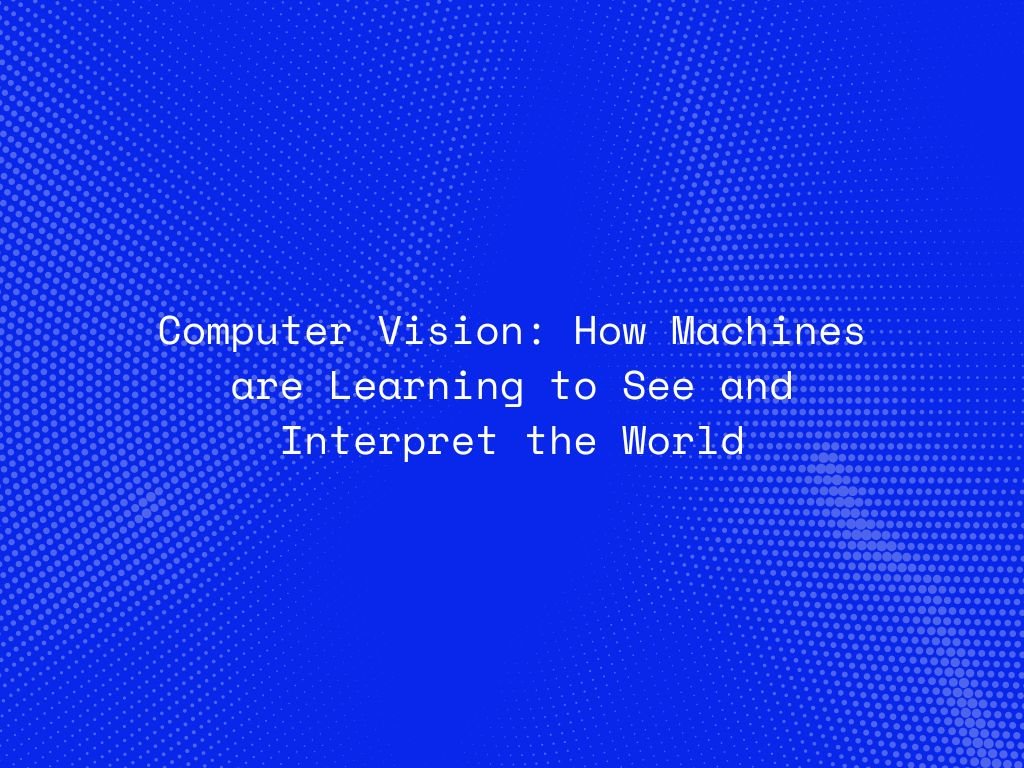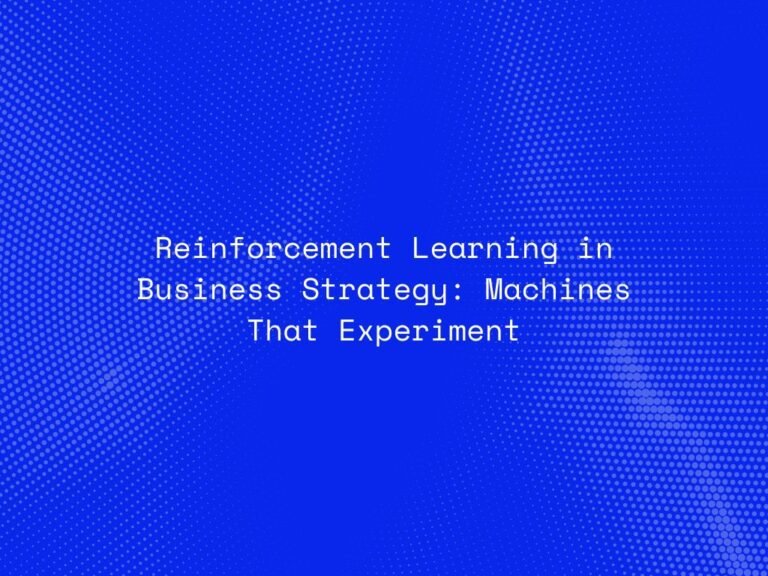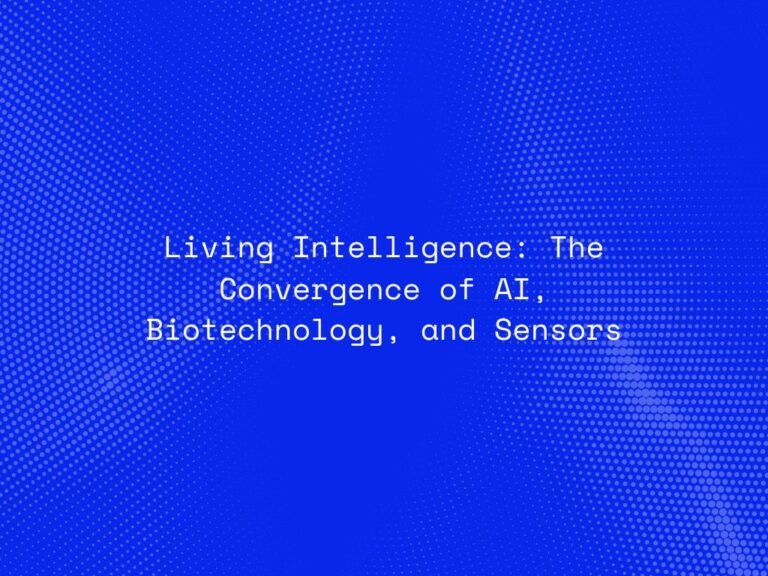Computer Vision is a field of artificial intelligence (AI) that enables machines to interpret and make decisions based on visual data. By mimicking the human visual system, computer vision allows machines to recognize objects, understand scenes, and extract valuable information from images and videos. This blog explores the advancements in computer vision, its applications across various industries, and the technologies that make it possible.
The Basics of Computer Vision
Computer Vision involves teaching machines to process and analyze visual information. The goal is to enable machines to understand and interpret the visual world similarly to how humans do. This involves several key steps:
- Image Acquisition: Capturing visual data using cameras, sensors, or other devices.
- Image Processing: Enhancing and manipulating images to improve their quality and extract features.
- Feature Extraction: Identifying important elements within an image, such as edges, shapes, and textures.
- Object Recognition: Detecting and classifying objects within an image.
- Scene Understanding: Interpreting the context and relationships between objects in a scene.
Key Technologies in Computer Vision
Several technologies and techniques are fundamental to the success of computer vision:
1. Deep Learning
Deep Learning has revolutionized computer vision by enabling machines to learn from large datasets. Convolutional Neural Networks (CNNs), a type of deep learning model, are particularly effective at image recognition tasks. CNNs can automatically learn to detect features such as edges, textures, and patterns, making them highly effective for visual data analysis.
2. Neural Networks
Neural Networks are the backbone of deep learning models used in computer vision. They consist of layers of interconnected nodes (neurons) that process and transform input data. By training these networks on labeled datasets, they can learn to recognize and classify images with high accuracy.
3. Image Segmentation
Image Segmentation is the process of partitioning an image into multiple segments or regions to simplify analysis. Techniques like semantic segmentation and instance segmentation are used to identify and differentiate objects within an image, allowing for more precise object detection and classification.
4. Object Detection
Object Detection involves identifying and locating objects within an image. Algorithms like YOLO (You Only Look Once) and SSD (Single Shot MultiBox Detector) are commonly used for real-time object detection, enabling applications such as autonomous driving and security surveillance.
5. Optical Character Recognition (OCR)
Optical Character Recognition (OCR) is a technology used to convert different types of documents, such as scanned paper documents or PDFs, into editable and searchable data. OCR systems can recognize and extract text from images, enabling applications like digitizing printed documents and automated data entry.
Connect With Us
Applications of Computer Vision
Computer Vision has a wide range of applications across various industries, transforming how businesses and individuals interact with visual data:
1. Healthcare
In healthcare, computer vision is used for medical imaging analysis, assisting in the diagnosis of diseases such as cancer and retinal disorders. AI-powered systems can analyze X-rays, MRIs, and CT scans, providing accurate and timely diagnoses.
2. Automotive
The automotive industry leverages computer vision for autonomous driving, advanced driver-assistance systems (ADAS), and vehicle safety features. Cameras and sensors on vehicles use computer vision algorithms to detect and respond to road conditions, obstacles, and traffic signals.
3. Retail
Retailers use computer vision for inventory management, customer behavior analysis, and personalized shopping experiences. In-store cameras can monitor stock levels, track customer movements, and provide insights into shopping patterns.
4. Manufacturing
In manufacturing, computer vision enables quality control, defect detection, and automation of production processes. Visual inspection systems can identify defects in products, ensuring high-quality standards and reducing waste.
5. Security
Security systems use computer vision for surveillance, facial recognition, and threat detection. AI-powered cameras can monitor public spaces, detect suspicious activities, and enhance security measures.
6. Agriculture
In agriculture, computer vision is used for crop monitoring, yield estimation, and pest detection. Drones equipped with cameras can capture images of fields, allowing farmers to assess crop health and take corrective actions.
The Future of Computer Vision
The future of Computer Vision looks promising, with advancements in AI and machine learning driving further innovations. Key trends to watch include:
1. Real-time Processing
Real-time processing capabilities will enhance applications like autonomous driving and security surveillance, enabling instant decision-making based on visual data.
2. Improved Accuracy
Ongoing research and development will continue to improve the accuracy of computer vision models, reducing errors and increasing reliability across applications.
3. Edge Computing
Edge Computing involves processing data closer to the source (e.g., on devices or sensors) rather than in centralized data centers. This approach will enable faster and more efficient computer vision applications, particularly in IoT devices and autonomous systems.
4. Enhanced Augmented Reality (AR)
Augmented Reality (AR) will benefit from computer vision advancements, providing more immersive and interactive experiences. Improved object recognition and scene understanding will enhance AR applications in gaming, education, and industrial training.
5. Ethical and Responsible AI
As computer vision becomes more pervasive, addressing ethical concerns related to privacy, bias, and accountability will be crucial. Developing responsible AI practices and frameworks will ensure the technology is used ethically and transparently.
Conclusion
Computer Vision is transforming the way machines see and interpret the world, with applications across healthcare, automotive, retail, manufacturing, security, and agriculture. By leveraging deep learning, neural networks, and advanced algorithms, computer vision enables machines to process and analyze visual data with remarkable accuracy and efficiency. As technology continues to evolve, the potential for computer vision to revolutionize industries and improve our daily lives is immense, paving the way for a more connected and intelligent future.




